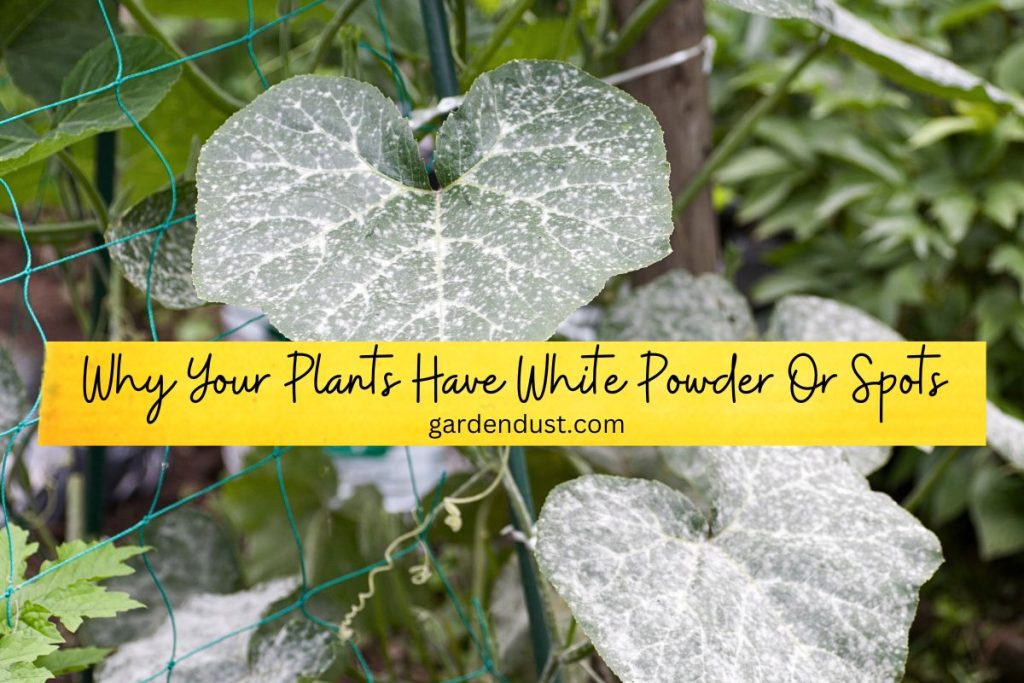As a plant lover, there’s nothing more disheartening than discovering your green companions covered in a mysterious white powder or spots. This common culprit is none other than powdery mildew, a fungal disease that can affect a wide variety of plants, both indoors and outdoors. Although powdery mildew may not be fatal, it can weaken your plants, hinder growth, and spoil their aesthetic appeal. In this article, we’ll get detail information about why your plants have white powder or sports. Let’s begin…..
What is Powdery Mildew?
Powdery mildew is a fungal disease caused by various species of the Erysiphales family. Unlike most fungal diseases that thrive in damp conditions, powdery mildew prefers warm and dry environments, making it a common problem during periods of high humidity and moderate temperatures. The fungus appears as a white, powdery coating on the leaves, stems, flowers, and even fruits of affected plants.
Causes of Powdery Mildew:
- Environmental Conditions: As mentioned earlier, powdery mildew thrives in warm and dry environments. High humidity and moderate temperatures provide the ideal conditions for spore germination and fungal growth.
- Poor Air Circulation: Inadequate air circulation around plants can create a microclimate that encourages the development of powdery mildew. Overcrowding plants or planting them too closely can contribute to this issue.
- Susceptible Plants: Certain plants are more susceptible to powdery mildew than others. Roses, cucumbers, squash, zucchini, and lilacs are some of the commonly affected plants.
- Weakened Plants: Stressed or weakened plants are more vulnerable to powdery mildew. Factors such as insufficient sunlight, nutrient deficiencies, and water stress can compromise plant health, making them more susceptible to the disease.
Symptoms of Powdery Mildew:
- White Powdery Coating: The most apparent symptom of powdery mildew is the white, powdery coating that appears on the surface of leaves, stems, and other plant parts.
- Spots and Blotches: Initially, small spots or blotches of white powder may appear on the leaves. As the infection progresses, the entire leaf surface may become covered.
- Curling and Distortion: Infected leaves may curl, twist, or become distorted in shape.
- Premature Leaf Drop: Severe infestations can lead to premature leaf drop, which weakens the plant and reduces its ability to photosynthesize effectively.
Read Also :-Ants On Cucumbers: Causes & Prevention
Prevention and Management:
- Choose Resistant Varieties: When selecting plants for your garden, opt for varieties that have shown resistance to powdery mildew. This simple step can significantly reduce the risk of infection.
- Maintain Proper Spacing: Ensure that your plants have enough space between them to allow for adequate air circulation. This will help reduce the humidity levels around the plants, making it less favorable for the fungus to thrive.
- Watering Practices: Avoid overhead watering, as wet leaves create a suitable environment for powdery mildew. Instead, water at the base of the plants to keep the foliage dry.
- Pruning: Regularly prune away infected leaves and plant parts to prevent the disease from spreading. Dispose of the infected debris properly, away from your garden.
- Fungicides: In severe cases, fungicides may be used to manage powdery mildew. Always follow the instructions on the label and choose products specifically formulated for the type of plants you are treating.
Powdery mildew may be a common and unsightly problem for plant enthusiasts, but with the right knowledge and proactive measures, it can be managed effectively. By understanding its causes, symptoms, and prevention methods, you can create a healthier environment for your plants and reduce the risk of powdery mildew outbreaks. Regular monitoring, proper watering practices, and choosing resistant varieties can go a long way in maintaining the beauty and vitality of your garden. Remember, a little vigilance and care can help your plants stay radiant and free from the grasp of powdery mildew. Happy Gardening…






